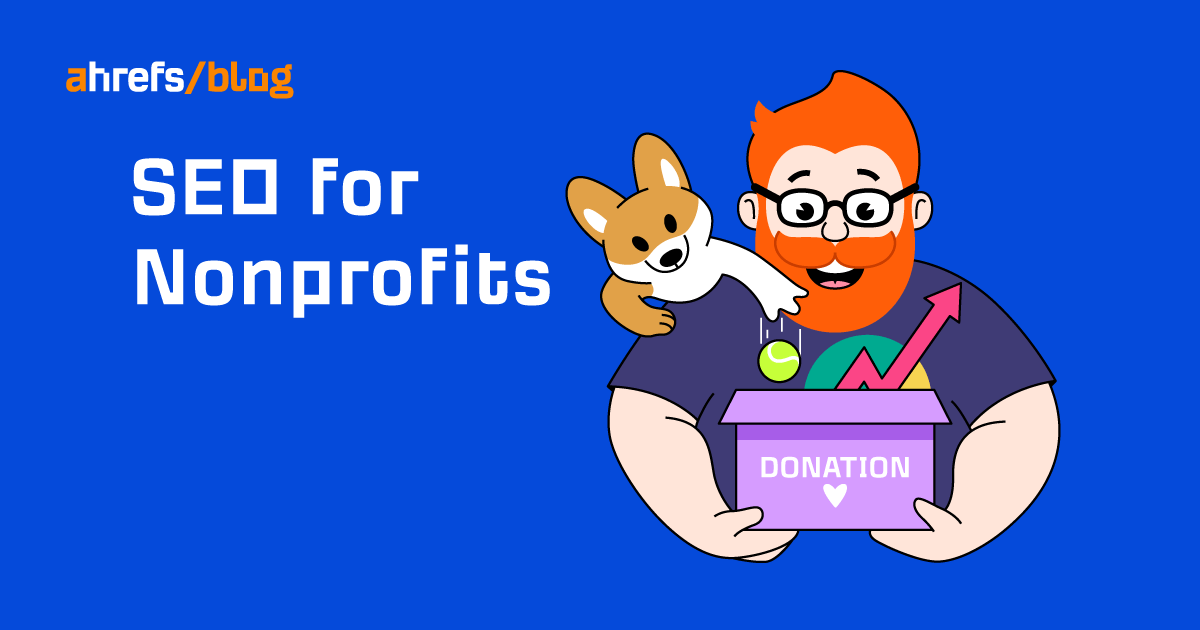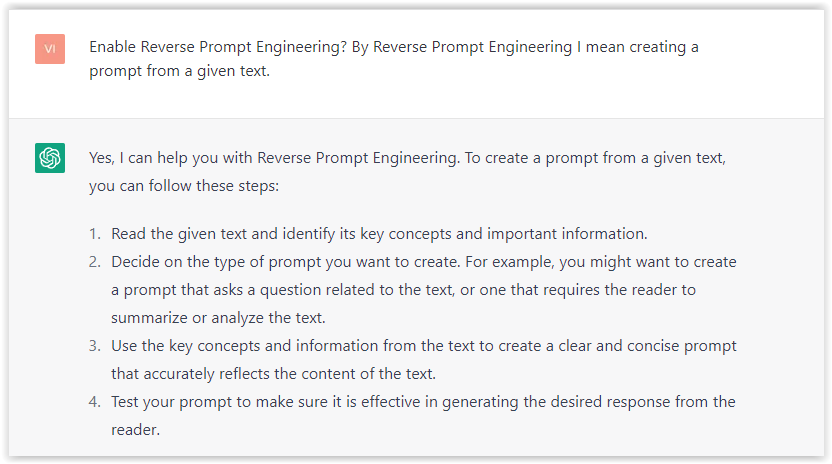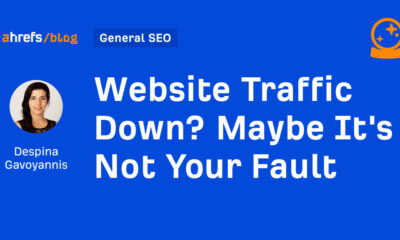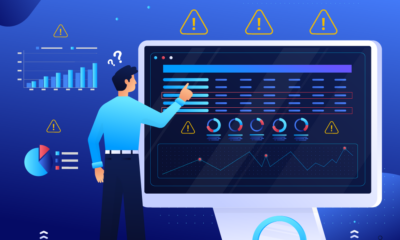SEO
13 Tips for More Traffic

For nonprofits and charities, every penny counts. And so does every source of traffic to their websites, including organic traffic from search engines like Google. So what can these organizations do to increase the influx of visitors (and hopefully donors) arriving through that channel? Of course, the answer is to step up their SEO game.
In this article, we’ll cover some definitions, free tools, and 13 SEO tips. You don’t need to be an SEO veteran to apply these tips. Nor do you need to be in the business of generating tons of content like Wikipedia to get people through your door. Ready? Here we go:
Search engine optimization (SEO) for nonprofits and charities is the process of optimizing websites to increase visibility on search engine results pages (SERPs) when people look for information related to that organization’s cause, e.g., volunteering, fundraising, events, education, etc.
To implement the tips featured in this article, you’ll need a couple of free tools. But don’t hurry to get them now. You can do it later once you choose the tips that you want to use.
- Ahrefs Webmaster Tools – AWT is our free tool that allows you to improve your website’s SEO performance and get more traffic from search. AWT can show you information like all known keywords your site ranks for, show all backlinks, and perform technical audits automatically, among other things.
- A keyword research tool – Some free ones are Ahrefs’ free keyword generator, Keyword Surfer, or Google Keyword Planner.
- Google with search operators – In case you haven’t had the occasion to use those, search operators allow for customizing search results. For example, you can tell Google to only show mentions of your organization on a particular website.
Now that we know what tools to use, let’s look at 13 actionable tips that can boost traffic.
First things first. Let’s talk about your website’s technical fundamentals. They may need a little work. But if you don’t get them in order first, you risk undermining your SEO efforts in the long run.
I’m talking about things like issues with crawling and indexing, missing meta tags, slow loading times, and practices that result in bad user experiences (e.g., pop-ups). It happens to everyone, businesses and nonprofits alike.
So before you implement any other SEO tips, do these five things:
- Use Ahrefs Webmaster Tools to monitor your website’s SEO health – This tool will regularly monitor your website for over 100 SEO health issues. All you need to do is fix the issues that AWT brings to your attention.
- Get rid of pop-ups – Or at least most of your pop-ups. These include sign-up forms, exit forms, etc. Do the same for any banners that shift the layout.
- Make sure your website’s layout is clear, consistent, and usable
- Optimize your website for mobile devices – Over 50% of website traffic comes from mobile devices. On top of that, Google indexes and ranks content based on mobile versions of the websites (mobile-first indexing).
- Optimize your website for Core Web Vitals
Pro tip
For checking multiple webpages’ speed at scale, you can use Ahrefs Webmaster Tools too. Apart from showing metrics like Time to First Byte (TTFB), it also supports Core Web Vitals.

The numbers in blue next to the metrics will direct you to exact pages within a certain category. This way, you will know which pages need attention.
Recommended reading: The Beginner’s Guide to Technical SEO
Keywords related to nonprofits and charities can be extremely competitive.
In times like these, your best chance to be somehow included in that top 10 is to get listed on the pages that rank.
So if there’s a list of charities ranking in the top 10, that may be your best chance to get a piece of that search demand.

Notice any nonprofit organizations you know here? Exactly. Most of the search results for the query “non profit organization” are lists and directories of organizations. As shown above, they are super hard to outrank.
Moreover, that may be your best shot at credibility. In this case, if the search intent suggests that people are looking for a list of nonprofit organizations, a “nonpartisan” result is likely more credible.
But there’s more to that tactic. Yes, you will get visibility and traffic. But if the site that is going to feature you also links to your website, that will be a new backlink for you. And each additional site that chooses to do things similarly will, of course, give you another backlink.
Why do you need backlinks? Because backlinks are still one of the strongest ranking factors. Generally, the more backlinks a page gets, the higher it ranks and the more traffic it gets (study).
You will be able to see all links pointing to your site using Ahrefs Webmaster Tools.
Nonprofits and charities commonly use PR. Hence, they get a lot of coverage from the media and partners. Interestingly enough, that tactic can bring SEO benefits too if the organization’s mentions are turned to links. Of course, that is not always the case:

You can find mentions of your organization using Google with the help of search operators. That’s exactly how I found the example above.

Of course, you can search the entire indexed internet for any mentions of your organization in any form.

The above query goes like this: wwf OR “world wildlife fund” ‑site:wwf.* ‑site:worldwildlife.* This basically means “show me pages that include ‘wwf’ or ‘world wildlife fund’ but exclude any site that starts with ‘wwf’ or ‘worldwildlife.’”
Finding mentions is the first step in the process. You still need to filter those results for unlinked mentions. We cover the entire process of finding unlinked mentions for any site in this tutorial.
Once you find your link opportunities, you need to reach out to the authors or site owners and simply ask them to link to you.
Naturally, the best way to get linked mentions is to ask for them upfront. A small “detail” like this can easily get overlooked in the heat of a PR campaign. Thus, it’s a good idea to include a mention of that in your standard operating procedures.
Media coverage is the lifeblood of nonprofit organizations. Naturally, it increases brand awareness and shapes PR. And if that coverage is online, it can also help improve rankings on search engines.
For this tip, I want to focus on a well-known SEO tactic: answering journalist requests on sites like HARO, ResponseSource, ProfNet, or SourceBottle. Additionally, you can scan Twitter for hashtags like #journorequest.
#journorequest for a CNN report on the cost of living in the UK. I’m looking to speak to food banks, charities and community groups in London supporting people manage rising energy and food prices.
— Anna Cooban (@annacooban) February 7, 2022
The idea is simple:
- Sign up for one of the services mentioned above. Don’t forget to subscribe to the type of requests you want to get.
- Answer requests that relate to topics you are an expert on as soon as possible.
- If a journalist chooses your pitch, you’ll be quoted in their text and will most probably get a link to your organization.
Why is this tactic effective for SEO? Because links from the media will usually be some of the most authoritative backlinks you can build to your site.

While services like HARO make the connection between journalists and sources easier, there is another side of that coin: Journalists get a lot of pitches. It can be quite hard to break through. To increase your chances of being picked by journos, we’ve got just the right guide: How to Build Backlinks and Get Press Using HARO [Case Study].
This tip is another way to build backlinks and get more visibility while you’re at it.
Guest blogging is about contributing guest articles on third-party websites (not only blogs). And it’s all over the internet. Here’s an example guest article from the American Nurses Association:

Whether you’re going to pitch articles for links or for the ability to get in front of somebody else’s audience, that’s entirely up to you. Guest blogging is good for both. However you want to approach it, just remember one thing: aim for high-quality websites.
Finding guest blogging opportunities can be as easy as plugging into Google “[your topic] ‘write for us’” or “[your topic] ‘guest post.’” But if you want to go pro and find these opportunities at scale (plus effectively filter them), see how we do it in this tutorial.
Here’s a great illustration of this tip. It’s called “Top 10 Facts About Pandas,” and it’s an article from WWF.
This is how it looks on the front side of things:

Ten interesting facts, 10 absolutely cute pictures, and a call to action: adopt a panda.
And here’s what’s happening under the hood—tons of organic traffic each month:
With this article about pandas, WWF targeted an educational keyword to leverage the search potential of this topic—this is what drives all that organic traffic you see above. Notice the “call to action” button at the top? From 10 facts about pandas to adopting a panda, those are clever ways of increasing awareness about protecting this species.
And by the way, the other button leads to more pages like this. So what we can see here is not just a one-off SEO stunt. It’s an entire strategy.
A fair portion of educational keywords is written as questions, making the keywords easier to find. Google even suggests those in almost every search via the PAA box:

The “People also ask” box for the query “climate change.”
You can use a keyword tool to get those questions’ SEO metrics and browse them easily:
Statistical keywords imply the use of statistical data to best serve the intent behind the search.
Why should you go after these keywords? Two reasons. First, if there is search demand for them, they can generate organic traffic to your website and make more people aware of your cause. Secondly, they are great “link earners.”
For example, the keyword “human rights issues 2020” is something that is best answered by providing the actual statistics for this problem. And some nonprofits do that:
Let’s take a closer look at the report ranking #1. This report from Human Rights Watch (one of the many reports in the series) generates over 2.5K monthly visits and about 2K backlinks.
The slope of traffic you can see in the graph above is because the report already became outdated in Q1 of 2021.
This brings us to another point: The important thing to remember about content targeting statistical keywords (including reports) is to keep the content up to date.
Do a small test. Google “human rights issues 2020.” Then “human rights issues 2021.” Now compare the results. I think you will easily spot the same websites with the same kind of content that’s updated according to the year.
There are certain topics that are best covered by experts. It’s true in life and true in SEO too. We’re talking about the so-called YMYL (Your Money or Your Life) topics. According to Google’s Quality Raters Guidelines, these topics are:
- News and current events.
- Civics, government, and law.
- Finance.
- Shopping.
- Health and safety.
- Groups of people (information about or claims related to groups of people, including but not limited to those grouped on the basis of race or ethnic origin, religion, disability, age, nationality, veteran status, sexual orientation, gender, or gender identity).
- Other topics related to big decisions or important aspects of people’s lives that may be considered YMYL. These include fitness and nutrition, housing information, choosing a college, finding a job, etc.
If you’re creating informational or educational content related to one of these topics, you may want to consider demonstrating E‑A-T to improve your rankings on SERPs.
E‑A‑T stands for expertise, authoritativeness, and trustworthiness. Same as YMYL, this concept comes from Google’s Search Quality Raters Guidelines, a document used by human quality raters to assess the quality of Google’s search results.
To put it simply, it’s best if that type of content is up to date, is accurate, quotes trustworthy sources, and is written or at least reviewed by an expert on the topic (and information on that expert is transparent and clearly displayed on the page).
To illustrate, here’s an example from Human Rights Watch. This is a news article about Afghan women’s rights activists:

When we click on the author’s bio, we can clearly see that the article was written by someone who is highly knowledgeable about the issue:

And here’s an example of how you can demonstrate E‑A-T: having a reviewer assess your content. Notice that there’s also a date showing when the review took place:

Recommended reading: What Is EAT? Why It’s Important for SEO
Global charities need global visibility. Organic traffic coming from multiple countries can greatly contribute to that goal. Hence, it’s important to implement some good practices of international SEO.
The first thing to note is that ranking high in one country doesn’t necessarily imply getting the same or even similar results in other countries. This is because Google localizes its search results based on the country and language of the query.
Let’s take a look at the results of translating Oxfam’s article about natural disasters. For the English version, the top five countries in terms of keywords and traffic are countries where search queries in English are native or very common:
And this is the same chart for the article’s Spanish version. We see Spanish-speaking countries dominating the top five.

At the same time, the United States, which ranks #2 for the English version, here ranks #10 with only 76 keywords (and all in Spanish).
Here’s another interesting fact. It will be easier to rank for keywords in some countries than in others. So if you think a keyword will be too hard to target in one language, try another language (provided your organization operates in those countries).

The word “famine” in the U.S. has a KD score of 60. This also means you’ll need backlinks from ~129 websites to rank in the top 10 for this keyword.

The word “famine” in France has a KD score of 3. We estimate that you’ll need backlinks from ~four websites to rank in the top 10 for this keyword.
Besides translating content, here are some things you can do to improve your international search rankings:
- Consider a localized URL structure and use a Content Delivery Network (CDN)
- Get links from local sources to your localized content
- Link to local sources from your localized content
- Keep in mind that Google isn’t the most popular search engine in some countries
You will find more details and tips for international SEO in our guides:
Pro tip
If you want to easily view depersonalized search results for different countries and different languages, try Ahrefs’ free SEO Toolbar.
Both locally operating nonprofits and global nonprofits can use local SEO to improve their rankings on search engines. Here’s how they can benefit from that.
When people look for your organization with a keyword containing a specific location, your organization’s branch can show up in the local map pack. Here’s an example for the query “unicef new york”:

So a person searching for this query can use these results to easily locate UNICEF’s branches in this region. But since UNICEF also has a page with information for people interested in the organization’s work in this part of the U.S., searchers can also click on these results:

Another way local SEO helps to point people in your direction is search results personalized by location, e.g., “non profit organizations near me”:

In this map pack, we have results that don’t show up on the first page of blue link search results. This means that by being featured in the map pack, these nonprofit organizations got a chance to jump over the other pages (no matter how well they were optimized for Google).
So if your organization has branches in different cities, here are the basic things you can do to leverage local SEO:
- Get a Google Business Profile and encourage some reviews of your local branches
- Create locally optimized landing pages
- Get links from local resources (and link to local resources too)
If you’d like to learn more on this topic, head over to our guides:
This is a Google Knowledge Panel:

You can find panels like this in many searches, not only for organizations or businesses. The knowledge panel is based on information in Google’s Knowledge Graph, a knowledge base of entities and the relationships between them. In this case, the entity is the nonprofit organization, Great Orchestra of Christmas Charity.
Knowledge panels matter for SEO (and for marketing in general) for a couple of reasons:
- Having a knowledge graph allows you to “own” more SERP real estate. As you can see, it’s really hard to overlook these panels; these panels give your organization’s brand more visibility.
- Aside from visibility, you can benefit from more credibility. If people want to look your organization up online because they want to volunteer or donate, having Google show this feature is almost like saying, “Yes, this organization is legit.”
Knowledge panels are something that nonprofits and charities should definitely go for. But I must warn you right away. Out of all the tips mentioned here, it’s probably the hardest thing to do. So to increase your chances, see this guide.
Branded search is any kind of query that contains words and phrases associated with your brand, products, or services.
Here is an example of a page that is partly optimized for branded search. If you Google the query “wwf logo” (the famous panda logo of WWF), you will find this page:

Notice anything strange here? Well, there’s no downloadable logo. If there was a logo on this page that visitors could use, they wouldn’t have to go back to the SERP and get the logo from another site. Wasted opportunity.
Why is this page only partly optimized for branded search? Because it ranks #1 for the query “wwf logo.” But it doesn’t fully serve the search intent behind the query, and that is to get a file with WWF’s logo.
The takeaway is quite simple here:
- Discover the branded keywords people look for to find information about your organization
- Create content that targets those keywords while serving the search intent
You can find your branded keywords using Ahrefs Webmaster Tools (or Google Search Console). Just open the Organic keywords report and filter the results using your organization’s name.

In extreme cases, you won’t rank for some of your branded keywords. To find such instances, you will need to use a keyword research tool, such as the ones I mentioned at the beginning of the article.
So let’s say you already have great content that attracts some high-quality links. As you should already know, those links definitely help that content rank higher on SERPs. But did you know those same links can help other pieces of content rank as well?
I’m talking about link equity, i.e., the “authority” that is passed when one page links to another.
You can pass link authority from one page to another if you link them, provided the links are relevant. These kinds of links are called internal links because they point to other pages in the same domain.
For example, here is an article from Oxfam about how the pandemic pushed more people into famine-like conditions. Notice how it links to a relevant report on the issue:

The best way to add relevant internal links is to do that as you write. You can just search through your existing content for articles that target certain keywords and link them to relevant (important!) articles. Or you can do it more strategically by designing a content hub.
But if you want to find relevant internal link opportunities to your existing content, you can automate the process using Ahrefs Webmaster Tools. Just sign up, crawl your site with Site Audit, and go to the Link opportunities report. This will show you relevant internal linking opportunities across your site.

Recommended reading: Internal Links for SEO: An Actionable Guide
Final thoughts
These 13 tips are by no means an SEO course. Nor are they a complete list of things nonprofits and charities can do for SEO. If you’re an SEO beginner or just want to revise your fundamentals, I highly recommend Ahrefs’ complete guide to SEO. I’m sure that you’ll come up with some more SEO ideas after reading it.
I’d like to conclude with a tip that is partly about SEO. If the competition on the SERPs gets too tough, nonprofits can use Google Ad Grants ($10K/mo) to jump over other search results.

On top of that, Google Ads is a tried and tested way to get backlinks for some types of content.
Got questions or comments? Ping me on Twitter.
SEO
brightonSEO Live Blog

Hello everyone. It’s April again, so I’m back in Brighton for another two days of Being the introvert I am, my idea of fun isn’t hanging around our booth all day explaining we’ve run out of t-shirts (seriously, you need to be fast if you want swag!). So I decided to do something useful and live-blog the event instead.
Follow below for talk takeaways and (very) mildly humorous commentary. sun, sea, and SEO!
SEO
Google Further Postpones Third-Party Cookie Deprecation In Chrome

Google has again delayed its plan to phase out third-party cookies in the Chrome web browser. The latest postponement comes after ongoing challenges in reconciling feedback from industry stakeholders and regulators.
The announcement was made in Google and the UK’s Competition and Markets Authority (CMA) joint quarterly report on the Privacy Sandbox initiative, scheduled for release on April 26.
Chrome’s Third-Party Cookie Phaseout Pushed To 2025
Google states it “will not complete third-party cookie deprecation during the second half of Q4” this year as planned.
Instead, the tech giant aims to begin deprecating third-party cookies in Chrome “starting early next year,” assuming an agreement can be reached with the CMA and the UK’s Information Commissioner’s Office (ICO).
The statement reads:
“We recognize that there are ongoing challenges related to reconciling divergent feedback from the industry, regulators and developers, and will continue to engage closely with the entire ecosystem. It’s also critical that the CMA has sufficient time to review all evidence, including results from industry tests, which the CMA has asked market participants to provide by the end of June.”
Continued Engagement With Regulators
Google reiterated its commitment to “engaging closely with the CMA and ICO” throughout the process and hopes to conclude discussions this year.
This marks the third delay to Google’s plan to deprecate third-party cookies, initially aiming for a Q3 2023 phaseout before pushing it back to late 2024.
The postponements reflect the challenges in transitioning away from cross-site user tracking while balancing privacy and advertiser interests.
Transition Period & Impact
In January, Chrome began restricting third-party cookie access for 1% of users globally. This percentage was expected to gradually increase until 100% of users were covered by Q3 2024.
However, the latest delay gives websites and services more time to migrate away from third-party cookie dependencies through Google’s limited “deprecation trials” program.
The trials offer temporary cookie access extensions until December 27, 2024, for non-advertising use cases that can demonstrate direct user impact and functional breakage.
While easing the transition, the trials have strict eligibility rules. Advertising-related services are ineligible, and origins matching known ad-related domains are rejected.
Google states the program aims to address functional issues rather than relieve general data collection inconveniences.
Publisher & Advertiser Implications
The repeated delays highlight the potential disruption for digital publishers and advertisers relying on third-party cookie tracking.
Industry groups have raised concerns that restricting cross-site tracking could push websites toward more opaque privacy-invasive practices.
However, privacy advocates view the phaseout as crucial in preventing covert user profiling across the web.
With the latest postponement, all parties have more time to prepare for the eventual loss of third-party cookies and adopt Google’s proposed Privacy Sandbox APIs as replacements.
Featured Image: Novikov Aleksey/Shutterstock
SEO
How To Write ChatGPT Prompts To Get The Best Results

ChatGPT is a game changer in the field of SEO. This powerful language model can generate human-like content, making it an invaluable tool for SEO professionals.
However, the prompts you provide largely determine the quality of the output.
To unlock the full potential of ChatGPT and create content that resonates with your audience and search engines, writing effective prompts is crucial.
In this comprehensive guide, we’ll explore the art of writing prompts for ChatGPT, covering everything from basic techniques to advanced strategies for layering prompts and generating high-quality, SEO-friendly content.
Writing Prompts For ChatGPT
What Is A ChatGPT Prompt?
A ChatGPT prompt is an instruction or discussion topic a user provides for the ChatGPT AI model to respond to.
The prompt can be a question, statement, or any other stimulus to spark creativity, reflection, or engagement.
Users can use the prompt to generate ideas, share their thoughts, or start a conversation.
ChatGPT prompts are designed to be open-ended and can be customized based on the user’s preferences and interests.
How To Write Prompts For ChatGPT
Start by giving ChatGPT a writing prompt, such as, “Write a short story about a person who discovers they have a superpower.”
ChatGPT will then generate a response based on your prompt. Depending on the prompt’s complexity and the level of detail you requested, the answer may be a few sentences or several paragraphs long.
Use the ChatGPT-generated response as a starting point for your writing. You can take the ideas and concepts presented in the answer and expand upon them, adding your own unique spin to the story.
If you want to generate additional ideas, try asking ChatGPT follow-up questions related to your original prompt.
For example, you could ask, “What challenges might the person face in exploring their newfound superpower?” Or, “How might the person’s relationships with others be affected by their superpower?”
Remember that ChatGPT’s answers are generated by artificial intelligence and may not always be perfect or exactly what you want.
However, they can still be a great source of inspiration and help you start writing.
Must-Have GPTs Assistant
I recommend installing the WebBrowser Assistant created by the OpenAI Team. This tool allows you to add relevant Bing results to your ChatGPT prompts.
This assistant adds the first web results to your ChatGPT prompts for more accurate and up-to-date conversations.
It is very easy to install in only two clicks. (Click on Start Chat.)
For example, if I ask, “Who is Vincent Terrasi?,” ChatGPT has no answer.
With WebBrower Assistant, the assistant creates a new prompt with the first Bing results, and now ChatGPT knows who Vincent Terrasi is.
 Screenshot from ChatGPT, March 2023
Screenshot from ChatGPT, March 2023You can test other GPT assistants available in the GPTs search engine if you want to use Google results.
Master Reverse Prompt Engineering
ChatGPT can be an excellent tool for reverse engineering prompts because it generates natural and engaging responses to any given input.
By analyzing the prompts generated by ChatGPT, it is possible to gain insight into the model’s underlying thought processes and decision-making strategies.
One key benefit of using ChatGPT to reverse engineer prompts is that the model is highly transparent in its decision-making.
This means that the reasoning and logic behind each response can be traced, making it easier to understand how the model arrives at its conclusions.
Once you’ve done this a few times for different types of content, you’ll gain insight into crafting more effective prompts.
Prepare Your ChatGPT For Generating Prompts
First, activate the reverse prompt engineering.
- Type the following prompt: “Enable Reverse Prompt Engineering? By Reverse Prompt Engineering I mean creating a prompt from a given text.”
 Screenshot from ChatGPT, March 2023
Screenshot from ChatGPT, March 2023ChatGPT is now ready to generate your prompt. You can test the product description in a new chatbot session and evaluate the generated prompt.
- Type: “Create a very technical reverse prompt engineering template for a product description about iPhone 11.”
 Screenshot from ChatGPT, March 2023
Screenshot from ChatGPT, March 2023The result is amazing. You can test with a full text that you want to reproduce. Here is an example of a prompt for selling a Kindle on Amazon.
- Type: “Reverse Prompt engineer the following {product), capture the writing style and the length of the text :
product =”
 Screenshot from ChatGPT, March 2023
Screenshot from ChatGPT, March 2023I tested it on an SEJ blog post. Enjoy the analysis – it is excellent.
- Type: “Reverse Prompt engineer the following {text}, capture the tone and writing style of the {text} to include in the prompt :
text = all text coming from https://www.searchenginejournal.com/google-bard-training-data/478941/”
 Screenshot from ChatGPT, March 2023
Screenshot from ChatGPT, March 2023But be careful not to use ChatGPT to generate your texts. It is just a personal assistant.
Go Deeper
Prompts and examples for SEO:
- Keyword research and content ideas prompt: “Provide a list of 20 long-tail keyword ideas related to ‘local SEO strategies’ along with brief content topic descriptions for each keyword.”
- Optimizing content for featured snippets prompt: “Write a 40-50 word paragraph optimized for the query ‘what is the featured snippet in Google search’ that could potentially earn the featured snippet.”
- Creating meta descriptions prompt: “Draft a compelling meta description for the following blog post title: ’10 Technical SEO Factors You Can’t Ignore in 2024′.”
Important Considerations:
- Always Fact-Check: While ChatGPT can be a helpful tool, it’s crucial to remember that it may generate inaccurate or fabricated information. Always verify any facts, statistics, or quotes generated by ChatGPT before incorporating them into your content.
- Maintain Control and Creativity: Use ChatGPT as a tool to assist your writing, not replace it. Don’t rely on it to do your thinking or create content from scratch. Your unique perspective and creativity are essential for producing high-quality, engaging content.
- Iteration is Key: Refine and revise the outputs generated by ChatGPT to ensure they align with your voice, style, and intended message.
Additional Prompts for Rewording and SEO:
– Rewrite this sentence to be more concise and impactful.
– Suggest alternative phrasing for this section to improve clarity.
– Identify opportunities to incorporate relevant internal and external links.
– Analyze the keyword density and suggest improvements for better SEO.
Remember, while ChatGPT can be a valuable tool, it’s essential to use it responsibly and maintain control over your content creation process.
Experiment And Refine Your Prompting Techniques
Writing effective prompts for ChatGPT is an essential skill for any SEO professional who wants to harness the power of AI-generated content.
Hopefully, the insights and examples shared in this article can inspire you and help guide you to crafting stronger prompts that yield high-quality content.
Remember to experiment with layering prompts, iterating on the output, and continually refining your prompting techniques.
This will help you stay ahead of the curve in the ever-changing world of SEO.
More resources:
Featured Image: Tapati Rinchumrus/Shutterstock
-

 PPC6 days ago
PPC6 days ago19 Best SEO Tools in 2024 (For Every Use Case)
-
SEARCHENGINES6 days ago
Daily Search Forum Recap: April 19, 2024
-
SEARCHENGINES7 days ago
Daily Search Forum Recap: April 18, 2024
-

 WORDPRESS6 days ago
WORDPRESS6 days agoHow to Make $5000 of Passive Income Every Month in WordPress
-

 SEO6 days ago
SEO6 days ago25 WordPress Alternatives Best For SEO
-

 WORDPRESS6 days ago
WORDPRESS6 days ago7 Best WooCommerce Points and Rewards Plugins (Free & Paid)
-

 WORDPRESS5 days ago
WORDPRESS5 days ago13 Best HubSpot Alternatives for 2024 (Free + Paid)
-

 MARKETING6 days ago
MARKETING6 days agoBattling for Attention in the 2024 Election Year Media Frenzy
















You must be logged in to post a comment Login